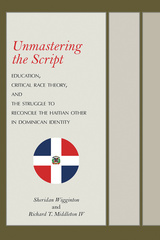Educating the Sons of Sugar
Jefferson College and the Creole Planter Class of South Louisiana
The education of individual planter classes—cotton, tobacco, sugar—is rarely treated in works of southern history. Of the existing literature, higher education is typically relegated to a footnote, providing only brief glimpses into a complex instructional regime responsive to wealthy planters. R. Eric Platt’s Educating the Sons of Sugar allows for a greater focus on the mindset of French Creole sugar planters and provides a comprehensive record and analysis of a private college supported by planter wealth.
Jefferson College was founded in St. James Parish in 1831, surrounded by slave-holding plantations and their cash crop, sugar cane. Creole planters (regionally known as the “ancienne population”) designed the college to impart a “genteel” liberal arts education through instruction, architecture, and geographic location. Jefferson College played host to social class rivalries (Creole, Anglo-American, and French immigrant), mirrored the revival of Catholicism in a region typified by secular mores, was subject to the “Americanization” of south Louisiana higher education, and reflected the ancienne population’s decline as Louisiana’s ruling population.
Resulting from loss of funds, the college closed in 1848. It opened and closed three more times under varying administrations (French immigrant, private sugar planter, and Catholic/Marist) before its final closure in 1927 due to educational competition, curricular intransigence, and the 1927 Mississippi River flood. In 1931, the campus was purchased by the Society of Jesus (Jesuits) and reopened as a silent religious retreat. It continues to function to this day as the Manresa House of Retreats. While in existence, Jefferson College was a social thermometer for the white French Creole sugar planter ethos that instilled the “sons of sugar” with a cultural heritage resonant of a region typified by the management of plantations, slavery, and the production of sugar.
Not only does this book provide a detailed history of the rise and fall of Jefferson College, but it also offers a window into the lives of French Creole planters and their views regarding education, religion, race, slavery, and politics.'
—The Journal of Southern History
‘Owing to the fascinating history of Jefferson College and Platt's compelling biographical chapters on Louis Dufau and Valcour Aime, Educating the Sons of Sugar is a welcome addition to Louisiana historiography.’
—Caryn Cossé Bell, author of Revolution, Romanticism, and the Afro-Creole Protest Tradition in Louisiana, 1718–1868
A fascinating and well-written institutional history, which will also serve as a vital contribution to the new wave of Creole studies and the history of multiculturalism in South Louisiana.’
—Rien Fertel, author of Imagining the Creole City: The Rise of Literary Culture in Nineteenth-Century New Orleans
List of Figures
Acknowledgments
Introduction: A Creole College in St. James Parish
1. Aristocracy, Education, and the Ancienne Population
2. The Rise and Fall of Jefferson College
3. The Forgotten Louis Dufau
4. Return of the Sugar Barons
5. Marists and Americanization
Conclusion: Class and College
Epilogue: Manresa, the Fifth Life of Jefferson College
Appendix A: Institutional Presidents at the Jefferson College Site
Appendix B: Acts to Incorporate and Support Jefferson College
Appendix C: Sale of Jefferson College to Louis Dufau
Appendix D: Property Deed: Valcour Aime to the Jefferson College Board of Directors
Appendix E: Acts of Transfer: The Jefferson College Board of Directors and Valcour Aime to the Society of Mary
Appendix F: An Act to Incorporate the Society of “The Fathers of the Society of Mary”
Appendix G: Sale of St. Mary’s Jefferson College to the Society of Jesus
Notes
Bibliography
Index







